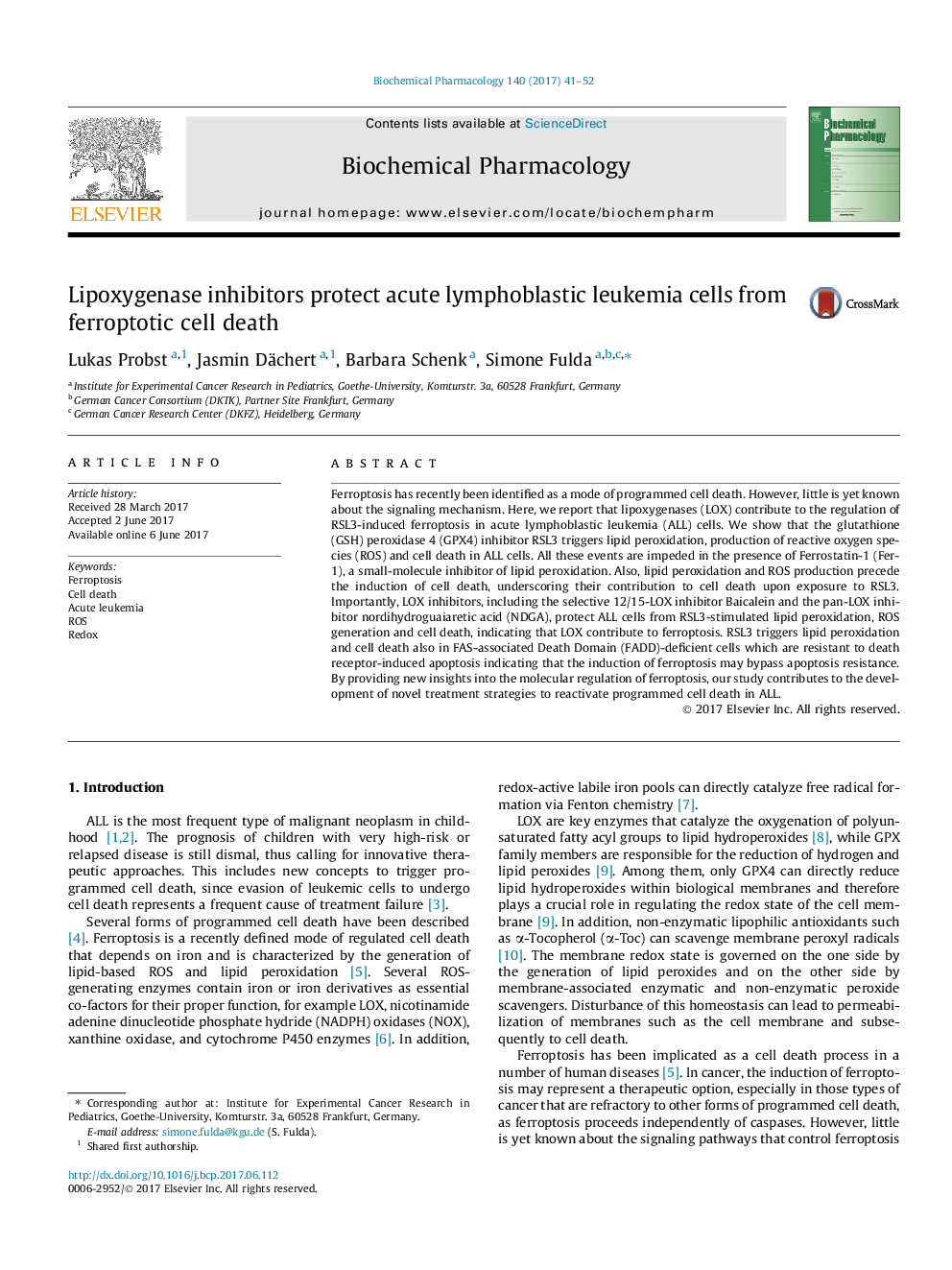| Article ID | Journal | Published Year | Pages | File Type |
|---|---|---|---|---|
| 5552005 | Biochemical Pharmacology | 2017 | 12 Pages |
Ferroptosis has recently been identified as a mode of programmed cell death. However, little is yet known about the signaling mechanism. Here, we report that lipoxygenases (LOX) contribute to the regulation of RSL3-induced ferroptosis in acute lymphoblastic leukemia (ALL) cells. We show that the glutathione (GSH) peroxidase 4 (GPX4) inhibitor RSL3 triggers lipid peroxidation, production of reactive oxygen species (ROS) and cell death in ALL cells. All these events are impeded in the presence of Ferrostatin-1 (Fer-1), a small-molecule inhibitor of lipid peroxidation. Also, lipid peroxidation and ROS production precede the induction of cell death, underscoring their contribution to cell death upon exposure to RSL3. Importantly, LOX inhibitors, including the selective 12/15-LOX inhibitor Baicalein and the pan-LOX inhibitor nordihydroguaiaretic acid (NDGA), protect ALL cells from RSL3-stimulated lipid peroxidation, ROS generation and cell death, indicating that LOX contribute to ferroptosis. RSL3 triggers lipid peroxidation and cell death also in FAS-associated Death Domain (FADD)-deficient cells which are resistant to death receptor-induced apoptosis indicating that the induction of ferroptosis may bypass apoptosis resistance. By providing new insights into the molecular regulation of ferroptosis, our study contributes to the development of novel treatment strategies to reactivate programmed cell death in ALL.
Graphical abstractDownload high-res image (94KB)Download full-size image
